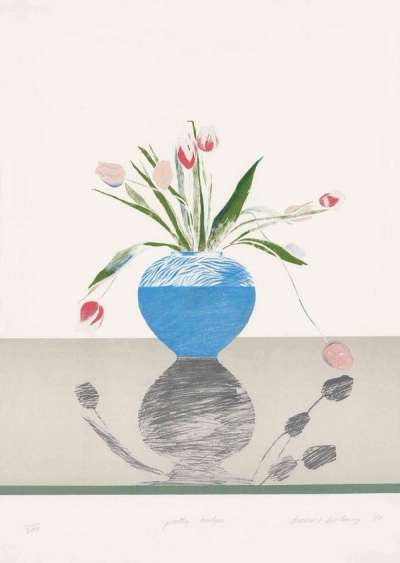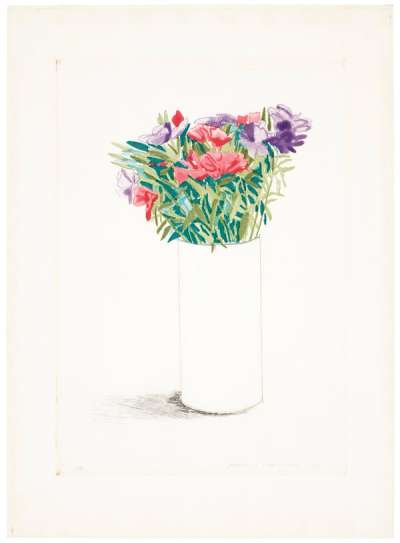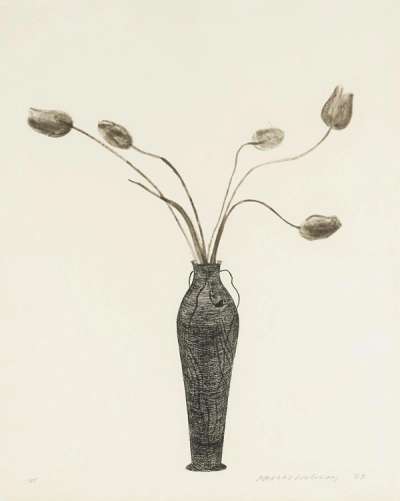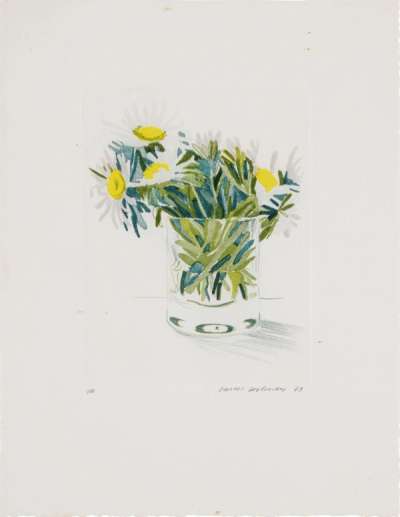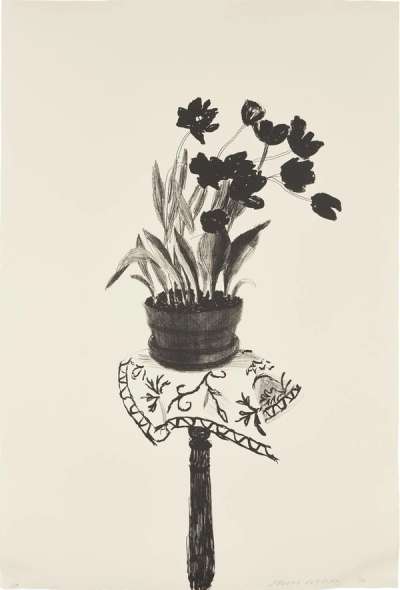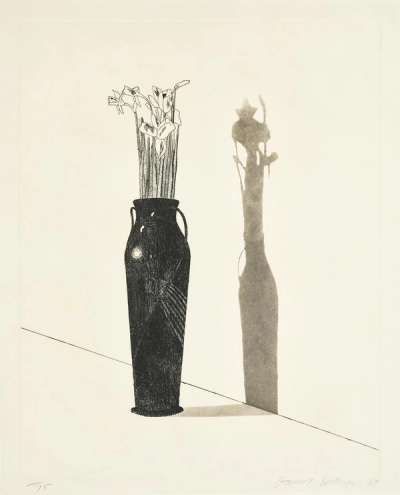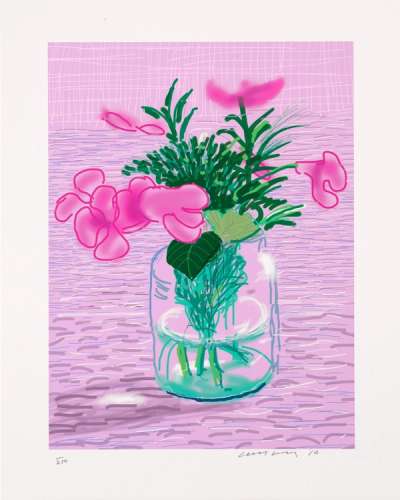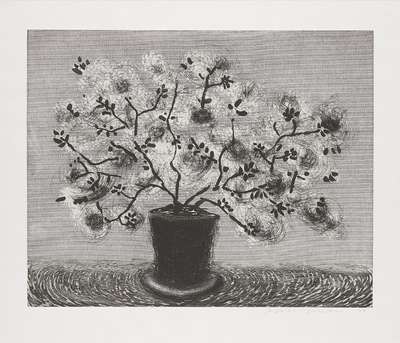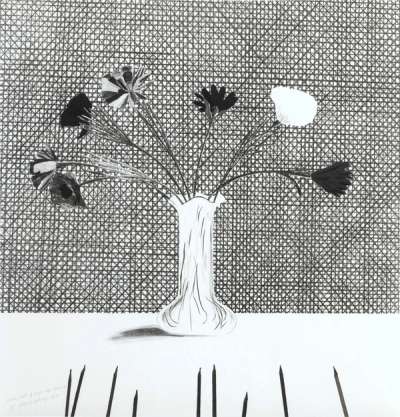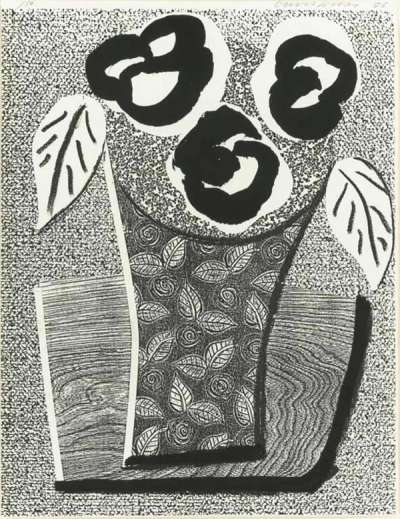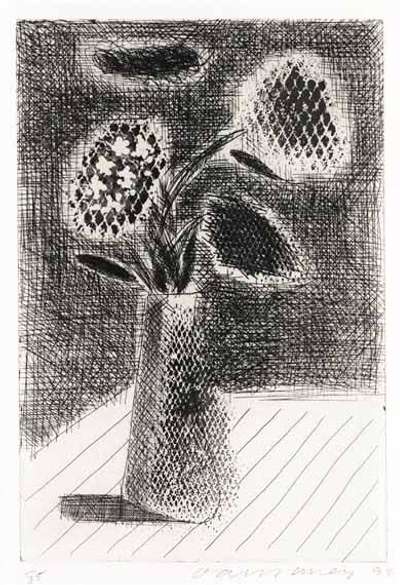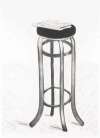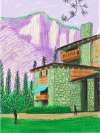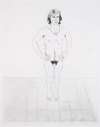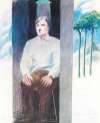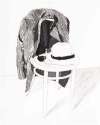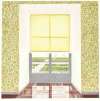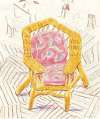Flowers
This collection traces David Hockney’s fascination with flowers, spanning almost his whole career. Taking tulips, lilies, godetia or daisies as his subject, his careful studies of each flower appear vividly spontaneous in style, yet belie, in their detail, the many hours of carefully observing space and light.
David Hockney Flowers For sale
Flowers Value (5 Years)
With £449156 in the past 12 months, David Hockney's Flowers series is one of the most actively traded in the market. Prices have varied significantly – from £1238 to £45000 – driven by fluctuations in factors like condition, provenance, and market timing. Over the past 12 months, the average selling price was £19528, with an average annual growth rate of -2.49% across the series.
Flowers Market value
Auction Results
| Artwork | Auction Date | Auction House | Return to Seller | Hammer Price | Buyer Paid |
|---|---|---|---|---|---|
 Pretty Tulips David Hockney Signed Print | 6 Dec 2025 | Antiques & Modern Auction Gallery | £2,975 | £3,500 | £4,250 |
 Three Black Flowers David Hockney Signed Print | 22 Nov 2025 | K Auctions | £5,100 | £6,000 | £7,000 |
 Black Tulips David Hockney Signed Print | 20 Nov 2025 | Stair Galleries | £15,300 | £18,000 | £22,000 |
 Potted Daffodils David Hockney Signed Print | 20 Nov 2025 | Stair Galleries | £17,000 | £20,000 | £24,000 |
 Tulips David Hockney Signed Print | 19 Nov 2025 | Doyle Auctioneers & Appraisers | £15,300 | £18,000 | £24,000 |
 Flowers Made Of Paper And Black Ink David Hockney Signed Print | 24 Oct 2025 | Christie's New York | £13,600 | £16,000 | £21,000 |
 Sunflower II David Hockney Signed Print | 18 Sept 2025 | Phillips London | £8,500 | £10,000 | £14,000 |
 Sunflower I David Hockney Signed Print | 25 Jun 2025 | Bonhams New Bond Street | £8,075 | £9,500 | £12,000 |
Sell Your Art
with Us
with Us
Join Our Network of Collectors. Buy, Sell and Track Demand
Meaning & Analysis
Hockney’s fascination with flowers has spanned his entire career, and this series emphasises his explorations into the still-life genre. From the late ’60s to his most recent exhibition of digital paintings the natural world has played an important role in the development of the artist’s unique style.
Flowers have always been an important part of the still life genre, featuring in over the top bouquets in Dutch 17th century paintings or in looser configurations for the subject by modernists such as Matisse, and Hockney’s interest in them appears to be academic as well as aesthetic. Taking tulips, lilies, godetia or daisies as his subject he produces careful studies of each flower, that, appearing as spontaneous and vivid as his sketches, belie the many hours of observation of space and light that have made him the master of optics he is today.
With this collection of works we also see Hockney moving deftly across the various techniques encompassed by the medium of print. From muted lithographs featuring his cross hatching style – which in turn refers back to earlier masters he admired such as Hogarth and Morandi – to more expressionist etchings such as Four Flowers In A Vase, Hockney shows his mastery of print to great effect when depicting flowers. An etching entitled Marguerites sees him taking the medium in another direction, reproducing a watercolour effect to convey the delicacy of these fresh flowers. Later lithographs and intaglios such as Potted Daffodils and Vase and Flowers sees him returning to a darker palette, to inject an almost photorealist style in the case of the former, and, in the latter, a sharp graphic line that recalls some his earlier Illustrations For Fourteen Poems By C.P. Cavafy and Illustrations For Six Fairy Tales From The Brothers Grimm.

